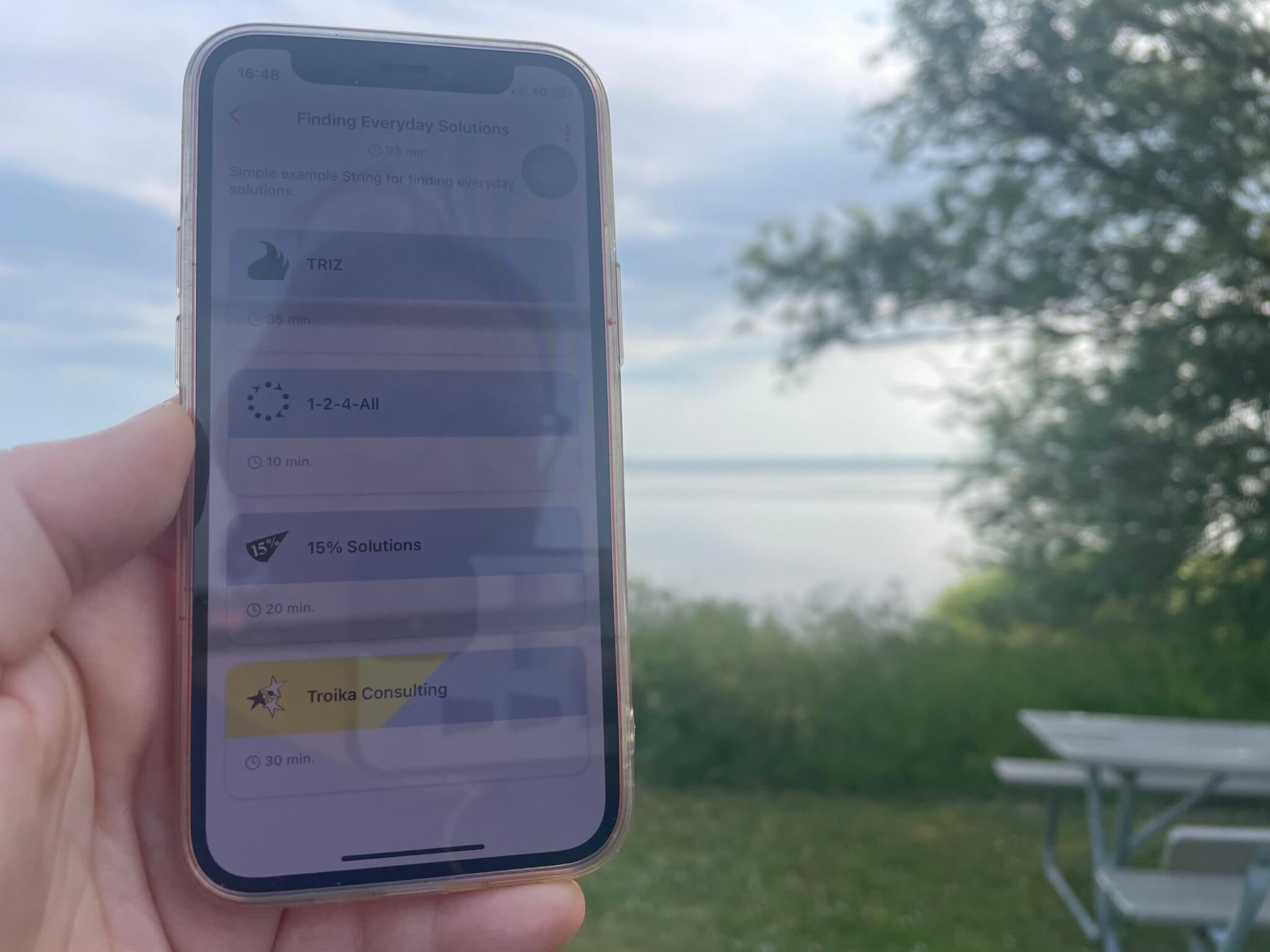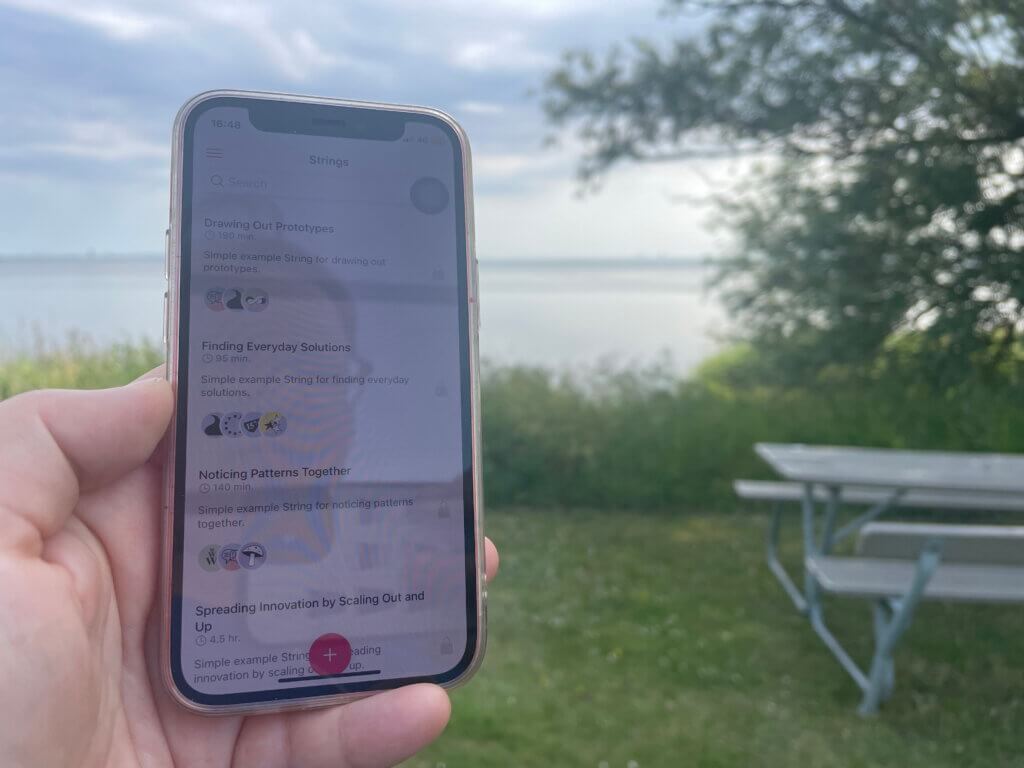
There is a Liberating Structures app!
I only found out recently that there is a Liberating Structures app! I like it! Nice to be able to browse on the bus or for quick inspiration in a workshop…
In the app, it’s easy to find a Liberating Structure (with instructions!) to match your purpose, and they also propose several “strings” for different purposes, for example for “noticing patterns together” or “finding everyday solutions”.
Browsing in the app, I found that an activity that I have been doing with groups in our intro courses to motivate setting up team contracts, is also a Liberating Structure: TRIZ! I ask them to write lists of all the ways in which a team project can crash and burn, because when we set up the team contract, the groups have already completed the first small group task together, so some problems (like people not showing up on time, or not responding in a timely manner) might already have been experienced. Also participants have a lot of group work experience from before, so they can list all the things that went wrong before mixed in with concerns that they have about this specific group or one or several members, so that all these things — and how to deal with them when they occur, or even better how to prevent them — can be listed in the group contract.
In the original TRIZ Liberating Structure, “clear space for innovation by helping a group let go of what it knows (but rarely admits) limits its success and by inviting creative destruction“, participants 1) make a list of all the things that could hinder progress, 2) go through that list and make a second list with all the things that apply in their specific case, and 3) think about steps to prevent the things on the second list. Maybe their second step is actually useful because then concerns are addressed not just as a theoretical possibility but based on experiences and observations within this specific group? But maybe that also depends on how long and how high-stakes people will work together afterwards and is not necessary for a project that is as small and short-term as the one we do. Or is it?
But in any case, it’s always good to see that Liberating Structures are actually very useful — even if it turns out that we are using them already without realizing (like “think-pair-share” that is very similar to “1-2-4-ALL”). If we are already successfully using some of them without even knowing that they are Liberating Structures, doesn’t that inspire confidence in the other structures, too?
